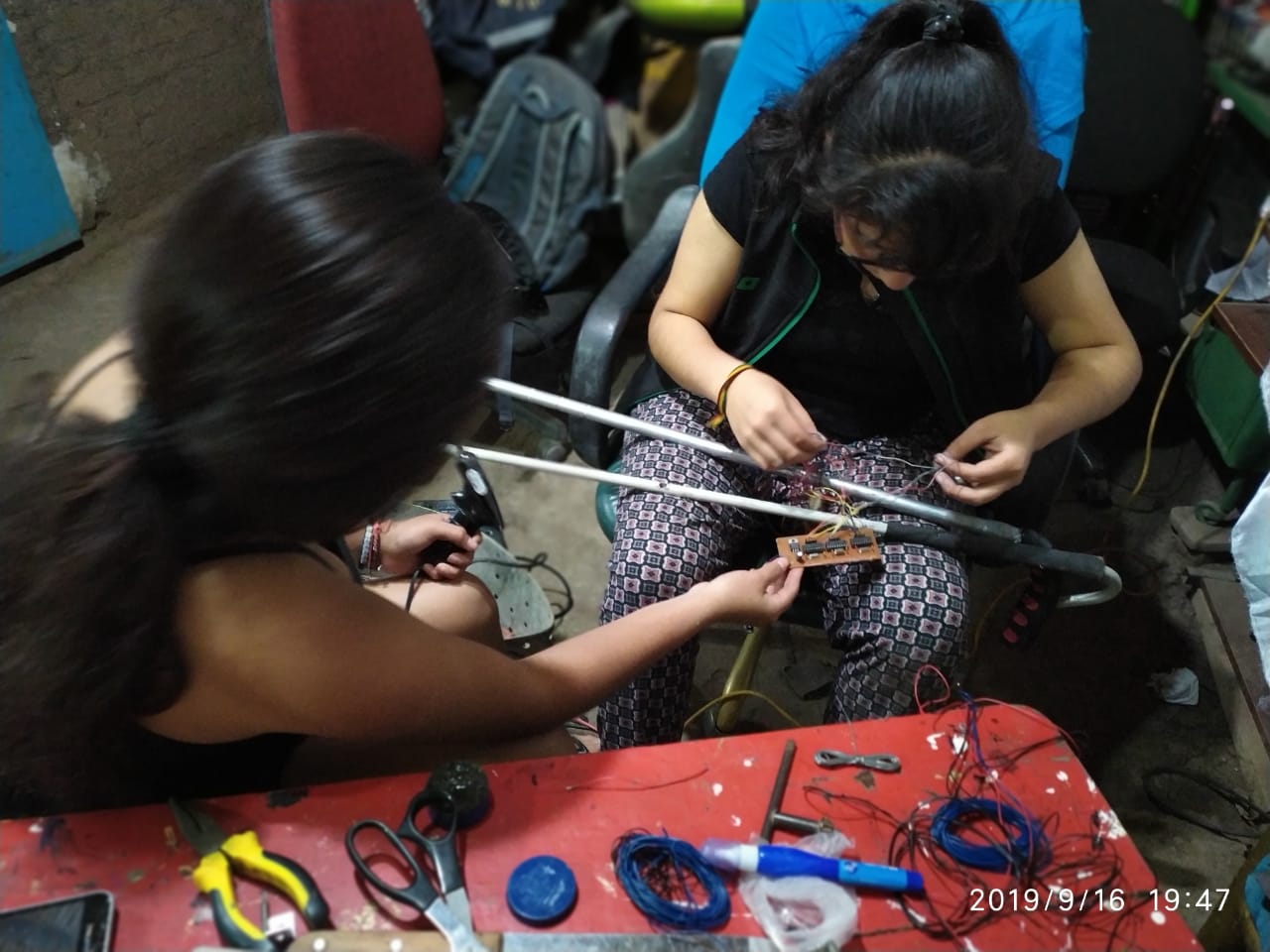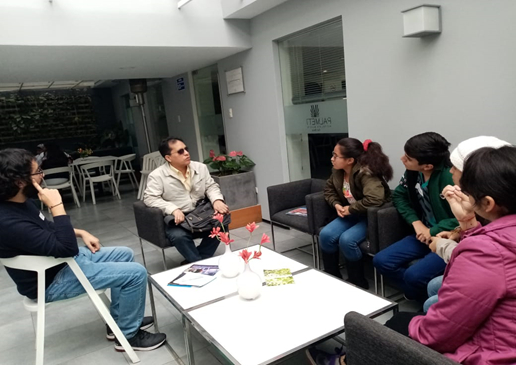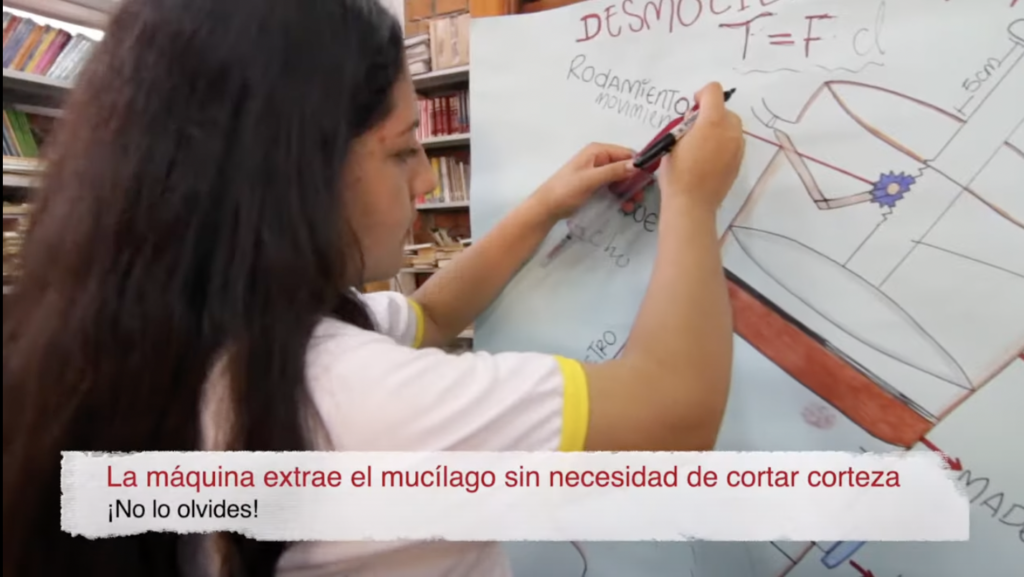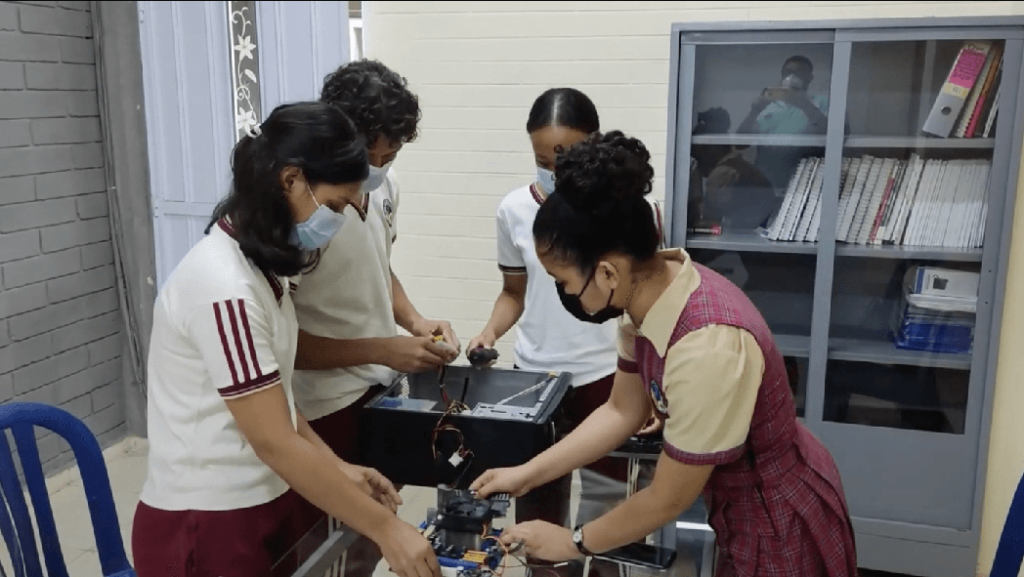Project gallery

Electronic cane: technological aid for the blind
Report sent by the Teacher
Karina Gricelda Santa Maria SantamariaSchool
Juan Pablo Vizcardo e Guzmán Departamento Lambayeque Provincia Chiclayo Distrito La Victoria, PeruProject team composition
Daniel Isaí Rodríguez Ángeles, Gabriela Josabet Benavides Cayotopa, Noa Jael Requejo Montoya, Suggey Elizabeth Benavides Cayotopa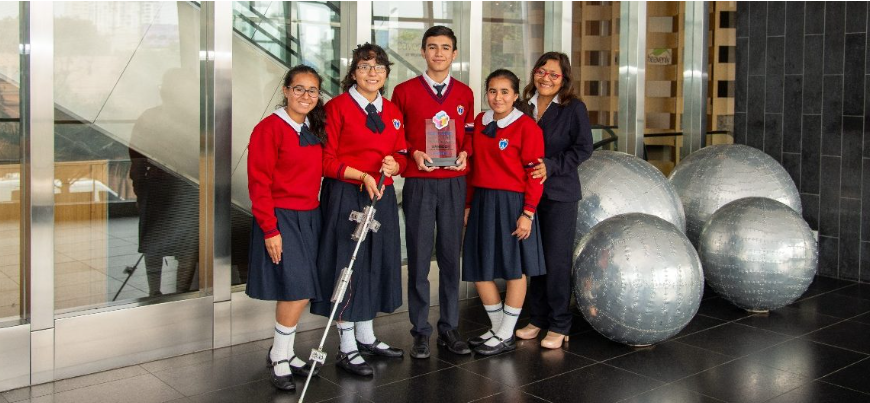
Age of students
15 to 17 years oldOther areas of knowledge
History, Social Sciences or Sociology, Arts (visual arts, film, music, etc.)Project duration
One yearSoft skills
Collaboration, Communication, Creativity, Critical thinkingSTEM areas
TechnologyEmpathy: learning from people’s values and needs
Project objective, problem to be solved, and main actions
The main objective of the project was to implement a technological device that helps people with visual impairments to strengthen their autonomy through free and safe movement.
The main question we wanted to answer was: How to build a prototype of an electronic cane that promotes autonomy through the free and safe movement of people with visual impairments in the neighborhood of La Victoria? The challenge was identified by having blind students who motivated us to conduct interviews with people with visual impairments in our community and members of the artisans association of the region of Lambayeque, Peru, led by Alternate President Prospero Cesar Carrillo Santiago. In addition, coexistence activities were conducted that allowed students to understand the development of these people and the particular need for an electronic cane, to achieve their displacement, autonomy, and safety.
The planned actions for the project planning were:
a) Incorporation of the social needs of people with visual impairments in learning activities,
b) Strengthen their skills through workshops,
c) Coordination meetings,
d) Visits to the association of artisans with disabilities,
e) Interviews,
f) Fieldwork and prototype testing. In the classes we had to incorporate learning activities that led us to develop the innovation project and with everyone’s support, to be able to improve it every day. The problem was identified from the reality that we live in our educational institution that houses inclusive students and in the history of a particular student, with many expectations of improvement.
I presented the proposal to the students. We organize ourselves through motivation to participate in innovative projects; meetings were held outside the classroom space, students’ electronic and electrical skills were strengthened through free courses, and the family was motivated to support their children.
Definition: better understanding of the challenges
Deepening into the issue and involvement of the school and local community
The need to improve the quality of life of people with visual impairments from a technological perspective led the team of students to carry out bibliographic reviews, descriptive, experimental theses, scientific articles, review articles, and related technological proposals that benefit people with visual impairments. Likewise, statistical data based on the World Health Organization on the population with different abilities are reviewed, concluding that the majority of visually impaired people in Peru, have many difficulties getting around in their daily actions and for this, they use a classic cane, support from a family member, a pet. However, there are proposals for more effective technological solutions, but the high cost does not facilitate implementation.
The educational community was involved through ongoing stimulation and financial support to start the project; management through agreements signed with strategic allies, family members accompanying their children in each extracurricular work meeting, and the other students were supported through permanent motivation.
It had the support of Conadis de Lambayeque. Mr. Próspero César Carrillo Santiago, President of the Association of Craftsmen with Disabilities of the Lambayeque Region, gave us the opportunity for students to live with people with visual impairments to get to know them, understand them and understand the reality they are going through. They also supported us with the working tests of the prototype.
Ideation: developing creative solutions
The development of the solution
The electronic baton prototype project has the following steps:
a) Investigate antecedents of technological prototypes that help the movement of blind people.
b) Find out about the materials needed to build our prototype.
c) Prepare design proposals for our own Electronic Baton prototype.
d) Buy the materials, the Arduino UNO R3, the HC-SR04 Ultrasonic sensors, cables, diodes, transistors, resistors, a 24,000 milliampere (mAh) portable charger, in addition to getting recycled cell phone vibrators, repurposed plastic and necessary tools for installing the materials.
e) Pass the sensor cables through the inside of the classic cane, to the Arduino box.
f) Pass the vibrator cables through the inside of the cane to the Arduino case.
g) Connect the positive and negative cables of the vibrators with the bakelites, to prevent them from burning.
h) Run the bakelite cables to the Arduino
i) Separate the cables of the 3 vibrators and the 3 sensors into positive, negative, ground, and power supplies.
j) Connect the 4 points to the Arduino
k) With the help of the Arduino software and the programming language, we programmed the distance that the sensors would capture.
l) Test our prototype with blind people
m) Promote our prototype on social media
n) Conduct awareness campaigns in our educational institution, where the promotion of inclusion and respect for blind people is valued, in addition to teaching the correct behavior of the community concerning these people; as well as giving talks to blind people and their families on how to use our technological alternative.
Prototype: making ideas tangible
The construction of the prototype
It is a prototype of an electronic cane for people with visual impairments. It was presented to the Municipality of the district of La Victoria, to the Regional Government of Lambayeque, and was given on a smaller scale to the association of artisans with disabilities in the Lambayeque region.
Materials used:
a) 3 PIC microcontrollers
b) Ultrasonic sensors HC-SR04
c) connecting wires
d) diodes
e) transistors
f) Resistance, sprats, crystals, capacitors,
g) portable charger of 24 thousand milliamps (mAh),
h) Recycled cell phone vibrators
e) Reused plastic
j) Tools needed to install the components (drill, soldering iron, etc.)
k) Sensor 1 (GND, 5v power supply, ECO, and TRIGGER).
Test: putting ideas out into the world
Evaluation of the process and the developed solution
The assessment was sustainable. An evaluation of the project was conducted in the initial stage, which was diagnostic, to know the needs of people with visual impairments; then a process evaluation to see how the prototype works and finally the final evaluation, which was tested with a group of people, to hear their points of view.
Reflections and pedagogical practices
The value of participating in Samsung Solve for Tomorrow
The importance lies in the fact that students are direct actors in the solutions to social problems; they feel that the learning acquired at school is useful in helping to meet social needs. Likewise, they are protagonists, leaders, and agents of change in society
Achievements and advances perceived by the teacher, throughout the process
Empowered students, leaders, with academic skills, empowered learning, and innovators, who find learning useful. At the same time, families and the educational community know how to value the work of students and see in them a model of innovation to follow. Improvements in terms of achievements in the area of scientific and technological competencies in secondary school students, competence development designs, and building technology solutions to solve problems in their environment
Challenges faced
The biggest challenges presented in 2019 were the economic resources for implementing the prototype. Likewise, during the testing of the prototype, we had to organize ourselves according to the available schedules of the disabled artisans in the Lambayeque region.
The design of the prototype of the electronic cane can be changed so that it is incorporated with a solar panel that allows the portable battery to be recharged and, thus, guarantee free and safe movement. You can also incorporate a LED spotlight so that it emits light for the cane.
Learning incorporated into the teacher’s routine and practice
Learning related to electrical circuits, electricity, electronics, in-service learning, development of science and technology projects, social inclusion, and usefulness of digital simulators in science learning.
#Schedule
Solve for Tomorrow is present in several countries in the region.
In each place, the program follows a specific schedule and rules, adapting to the local reality. To take part, visit your country's website, read the rules carefully and don't miss out!
